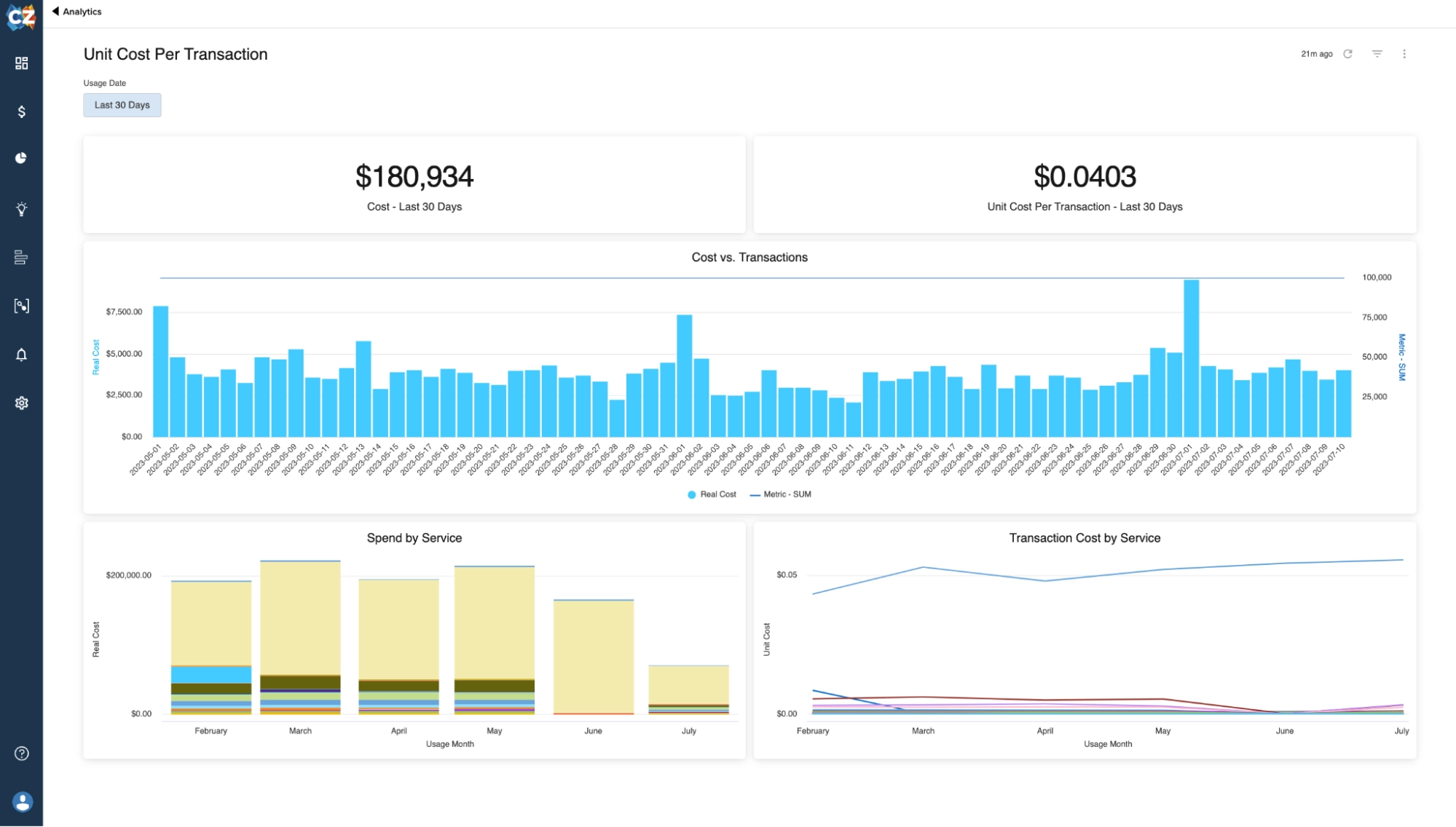At CloudZero, we’re pretty proud of the fact that our platform allows you to maximize your profitability by understanding your unit costs. In fact, our platform’s ability to help you easily track and analyze unit costs is one of the things that sets us apart the most from our competitors.
Here is a brief breakdown of why our method of determining your company’s unit economics is so valuable and what our competitors offer — or don’t offer — in comparison.
Why is understanding your unit costs such a big deal?
In the cloud, unit costs are your key to keeping your bill under control and your company on a path of sustainable growth. Tracking metrics such as cost per customer, the cost to develop a new product or feature, and even the cost of each of your engineering teams allows you to make informed decisions.
You could, for example, identify which features are most (and least) profitable in the cloud, and rearchitect the ones that are struggling. Or, if you see that one customer segment is costing you substantially more than another, you could revise pricing frameworks for each customer segment to maximize profitability.
How Do Cloud Cost Platforms Stack Up When It Comes To Unit Economics?
CloudZero
If you use CloudZero, you can find this unit cost information easily.
Simply customize the categories you’d like to track — customers, regions, products, features, engineering teams, and anything else that makes sense for your situation — and our advanced cost allocation engine will assign costs to each of those categories.

You can then view each of these unit costs in the CloudZero platform, which can help you keep track of trends and shifts over time.
Additionally, because of our code-driven approach to cost allocation, you can ingest spend from any of your cloud cost sources — including AWS, GCP, Azure, Kubernetes, Snowflake, MongoDB, New Relic, and more — and see that spend in the unit cost metrics that matter to your business.
For instance, you could see how much a specific customer is driving your Snowflake spend, which cloud provider is driving costs for your most used product feature, or even how much one of your engineering teams is spending on Kubernetes. The possibilities of exploring your spend are nearly endless.
AWS Cost Explorer
To achieve the same result in AWS Cost Explorer, you would have to manually tag every single resource — impossible, given that some resources are untaggable — and assign metadata that describes the category to which it belongs.
You’d then have to perform manual calculations with sets consisting of millions of data points to obtain a snapshot of where your unit costs are right now. If you wish to track changes over time, you’ll have to repeat this process over and over again, indefinitely.
In other words, AWS Cost Explorer has no comparable functionality to CloudZero’s unit cost calculation abilities. Instead, you would have to reinvent the wheel and build your own solution or resign yourself to calculating unit costs by hand.
CloudHealth and Cloudability
Similarly, CloudHealth relies exclusively on your manual tags to gather data. Cloudability requires manual tagging as well, and any shared resources must have costs allocated manually.
This means you’d essentially have to guess which percentage of costs belong to which category, making your subsequent unit cost calculations inaccurate.
Spot
Spot works well for large enterprise organizations since it offers several avenues for better FinOps intelligence. Those avenues include profit analysis, total spend, and cost over time. It can also get a bit more detailed allowing you to view cost allocation by individual cost centers, monthly commitments overtime, and more.
However, it still lacks the granular level of detail CloudZero offers, allowing engineering and FinOps teams to make the most educated decisions. CloudZero’s unit cost approach still offers a more in-depth look at how each aspect of your business affects total cloud costs and requires less work to get set up.
The takeaway: The competition simply can’t provide the same depth of data as CloudZero.
If You’ve Never Harnessed The Power Of Unit Costs, You’re Leaving Money On The Table
It might seem “good enough” to use one of the solutions that provide cost tracking without unit cost insights.
It might even feel like a step up to opt for a “peanut butter spread” solution that bases results on averages and educated guesses. Especially if your business is on the smaller side, you might not intuitively see the value in tracking each individual cost your company incurs.
But without unit costs, you’d have to make major business decisions regarding pricing tiers, feature development, infrastructure options, and even the level of customer support you can afford to provide based on hunches or gut feelings.
Unit costs are the key to widening your margins, managing the ever-present expansion of cloud costs, and determining whether your cost increases are healthy (based on profitable growth) or unhealthy (due to inefficiencies).
 to see how CloudZero can unlock the cloud cost intelligence to power your company’s growth.
to see how CloudZero can unlock the cloud cost intelligence to power your company’s growth.








